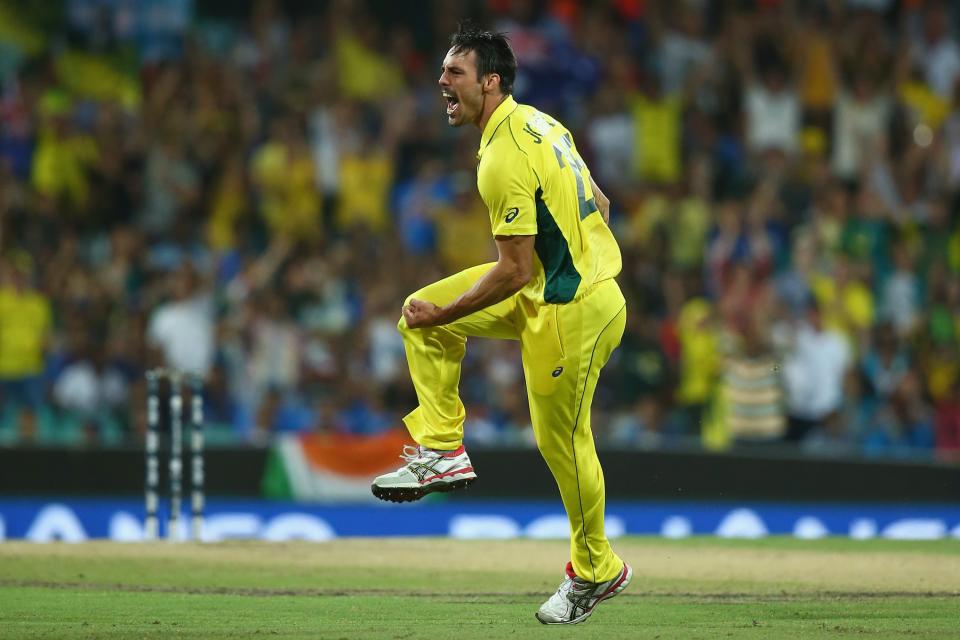Here's Where India Lost The Plot
The target of 328 in the semifinal was gettable. But India failed to do something they'd done well through the tournament.

The brilliant Indian juggernaut came to a grinding halt in Sydney. There were some heartening performances from the defending champions: winning seven out of seven taking seventy wickets and raising the expectations of a nation of over a billion, the Blues made their country proud before bowing out.
India endured a long four-month tour of Australia. Their preparation was poor. Many (including myself) didn’t give them a realistic chance of going all the way. However, much changed within the team when they played Pakistan. They played with great discipline in all three departments—something you don’t always associate with Indian teams of the past.
But in the semifinal, was it a case of India running out of steam after a long time on the road? Did the pressure get to them? Were they beaten by a better team? Or did they just let the Cup slip from their grasp?
I think it was a combination of a few things, and other than the fact that Australia were better team on the day, India made a few mistakes. When you look at the score sheet, the victory margin will appear way bigger than it actually was. Pre-game, I had said there wasn’t much separating the team other than Australia’s long batting and the magic fielding of Steve Smith and Glenn Maxwell. So what really was different?
Surprisingly, it wasn’t the magnificent ton by Smith, who seems to operate on a level different from his colleagues. Nor the 27 that Mitchell Johnson walloped at the end. Nor was it Aaron Finch, whose long innings battling through the frustration of not finding the gaps allowed Smith to play fearlessly and prepare Australia for an onslaught—which never arrived. The target of 329 was not out of India’s reach given how Sri Lanka gave a great chase to Australia’s 375 earlier.
So where did it go wrong for India?
Look at India’s wins in the pool matches. One of their keys to success was their batting between overs 10 and 20, weather chasing or setting targets: 56/1 against Pakistan; 47/1 against SA; 71/0 against Ireland; 48/1 against Zimbabwe, and so on.
Their average score between overs 10-20 was 51 before the semis, with the loss of 0.7 wickets. This foundation meant one of their top three batsmen played through a great portion of the innings, allowing the likes of Suresh Raina, MS Dhoni and even Ravindra Jadeja to maximize gains from the Powerplay overs, and continue to play freely with wickets in hands in the slog overs.
But in the semifinal, despite the typical great start, they scored a poor 40-3 in those vital 10 overs. Was it good bowling by Australia or was it the scoreboard beginning to talk to the Indian batsmen about the climbing required rate?
Dhawan had survived an early let-off, dropped by Brad Haddin off Josh Hazlewood, and once James Faulkner was introduced into the attack, Dhawan took him on with some stylish play. Faulkner’s first two overs went for 29, most of those runs going to Dhawan. But instead of building on this spurt with some smart running and the occasional boundary, Dhawan continued with his all-out aggression and tried to hit Hazlewood over his head, only to be caught at deep cover by Maxwell.
Virat Kohli looked prepared to play himself in for the long innings. I’m a great admirer of Virat’s ability to convert starts into hundreds, especially in chases. However, he also succumbed to the semi-final pressure, top-edging Mitchell Johnson for an easy catch to Haddin. The bouncer was at a good height, and too close to his body to free his arms. But with 35 overs still to go, this shot could have waited.
The final nail in the coffin: two overs later, Johnson replied perfectly to Rohit Sharma’s brilliant pull for six, with a great delivery that rushed through Rohit’s defence.
Three wickets for forty in the building phase of the innings was the area I believe that India lost the game. It prevented Raina and MSD to play with any freedom. In the final analysis though, India will have to admit that they were outplayed by a superior team on the day—and, in this, there is no shame. Thanks for the entertainment, India.

 Yahoo Sport
Yahoo Sport 





































